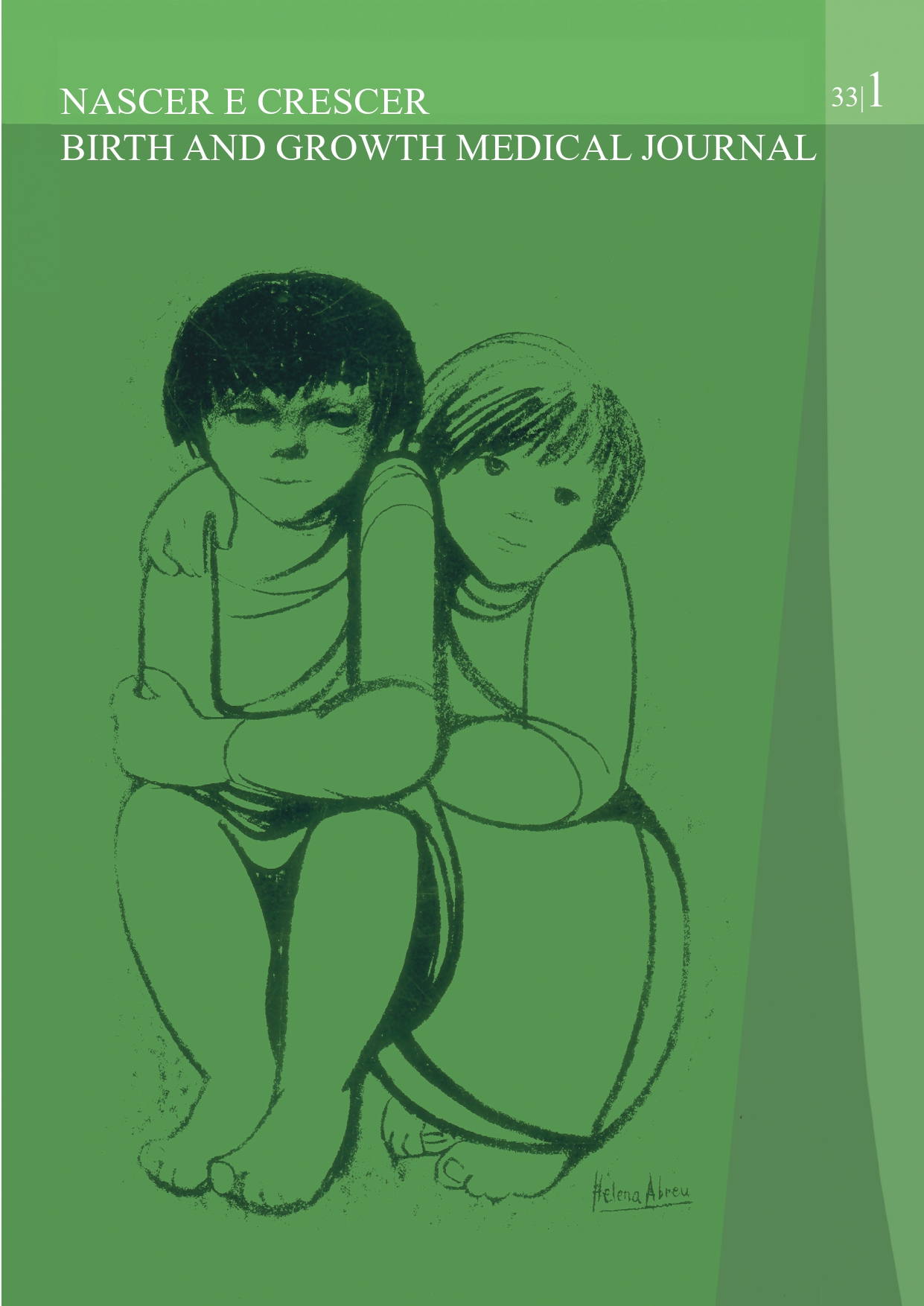Oral iron therapy for pediatric restless legs syndrome: An evidence-based review
DOI:
https://doi.org/10.25753/BirthGrowthMJ.v33.i1.31275Keywords:
pediatric, oral iron, restless legs syndromeAbstract
Restless legs syndrome (RLS) is a sensorimotor neurological disorder that affects sleep and has a significant impact on mood, behavior, cognition, and function. Genetics, the brain dopamine system, and iron deficiency are known to play important roles in its pathophysiology. The aim of this study was to review the current evidence on the effectiveness of oral iron supplementation in the treatment of pediatric RLS. A total of six publications were included: one guideline and five observational studies. Although there is limited evidence to draw definitive conclusions about the effectiveness of oral iron in the treatment of pediatric RLS, initiation of oral iron at a dose of 3−8.5 mg/kg/day for 12 weeks when ferritin levels are below 50 ng/dL appears to be beneficial. Given the small number of studies on this topic and their limitations, B-level SORT strength of recommendation was assigned.
Downloads
References
Picchietti DL, Bruni O, de Weerd A, Durmer JS, Kotagal S, Owens JA, et al. Pediatric restless legs syndrome diagnostic criteria: an update by the International Restless Legs Syndrome Study Group. Sleep Med. 2013;14(12):1253-9. doi: https://doi.org/10.1016/j.sleep.2013.08.778.
Munzer T, Felt B. The Role of Iron in Pediatric Restless Legs Syndrome and Periodic Limb Movements in Sleep. Semin Neurol. 2017;37(4):439-445. doi: https://doi.org/10.1055/s-0037-1605342.
Khatwa U, Kothare SV. Restless legs syndrome and periodic limb movements disorder in the pediatric population. Curr Opin Pulm Med. 2010; 16(6):559-67. doi: https://doi.org/10.1097/MCP.0b013e32833f11ae.
Silvestri R, DelRosso LM. Pediatric Restless Legs Syndrome. Sleep Med Clin. 2021;16(2):305-314. doi: https://doi.org/10.1016/j.jsmc.2021.02.006.
Stubbs PH, Walters AS. Tools for the Assessment of Pediatric Restless Legs Syndrome. Front Psychiatry. 2020;11:356. doi: https://doi.org/10.3389/fpsyt.2020.00356.
Allen RP, Picchietti DL, Auerbach M, Cho YW, Connor JR, Earley CJ, et al. Evidence-based and consensus clinical practice guidelines for the iron treatment of restless legs syndrome/Willis-Ekbom disease in adults and children: an IRLSSG task force report. Sleep Med. 2018;41:27-44. doi: https://doi.org/10.1016/j.sleep.2017.11.1126.
Tilma J, Tilma K, Norregaard O, Ostergaard JR. Early childhood-onset restless legs syndrome: symptoms and effect of oral iron treatment. Acta Paediatr. 2013; 102(5):e221-6. doi: https://doi.org/10.1111/apa.12173.
Earley CJ, Connor J, Garcia-Borreguero D, Jenner P, Winkelman J, Zee PC, et al. Altered brain iron homeostasis and dopaminergic function in Restless Legs Syndrome (Willis-Ekbom Disease). Sleep Med. 2014;15(11):1288-301. doi: https://doi.org/10.1016/j.sleep.2014.05.009.
Ebell MH, Siwek J, Weiss BD, Woolf SH, Susman J, Ewigman B, Bowman M. Strength of recommendation taxonomy (SORT): a patient-centered approach to grading evidence in the medical literature. Am Fam Physician. 2004; 69(3):548-56. PMID: 14971837.
Furudate N, Komada Y, Kobayashi M, Nakajima S, Inoue Y. Daytime dysfunction in children with restless legs syndrome. J Neurol Sci. 2014; 336(1-2):232-6. doi: https://doi.org/10.1016/j.jns.2013.11.001.
Amos LB, Grekowicz ML, Kuhn EM, Olstad JD, Collins MM, Norins NA, et al. Treatment of pediatric restless legs syndrome. Clin Pediatr (Phila). 2014; 53(4):331-6. doi: https://doi.org/10.1177/0009922813507997.
Rosen GM, Morrissette S, Larson A, Stading P, Barnes TL. Does Improvement of Low Serum Ferritin Improve Symptoms of Restless Legs Syndrome in a Cohort of Pediatric Patients? J Clin Sleep Med. 2019 Aug 15;15(8):1149-54. doi: https://doi.org/10.5664/jcsm.7810.
Dye TJ, Jain SV, Simakajornboon N. Outcomes of long-term iron supplementation in pediatric restless legs syndrome/periodic limb movement disorder (RLS/PLMD). Sleep medicine 2017;32:213-9. doi: https://doi.org/10.1016/j.sleep.2016.01.008.
Downloads
Published
How to Cite
Issue
Section
License
Copyright (c) 2024 Ana Lucas, Gisela Leite, João Correia

This work is licensed under a Creative Commons Attribution-NonCommercial 4.0 International License.
Copyright and Authors' Rights
All articles published in Nascer e Crescer - Birth and Growth Medical Journal are Open Access and comply with the requirements of funding agencies or academic institutions. For use by third parties, Nascer e Crescer - Birth and Growth Medical Journal adheres to the terms of the Creative Commons License "Attribution - Non-Commercial Use (CC-BY-NC)".
It is the author's responsibility to obtain permission to reproduce figures, tables, etc. from other publications.
Authors must submit a Conflict of Interest statement and an Authorship Form with the submission of the article. An e-mail will be sent to the corresponding author confirming receipt of the manuscript.
Authors are permitted to make their articles available in repositories at their home institutions, provided that they always indicate where the articles were published and adhere to the terms of the Creative Commons license.


